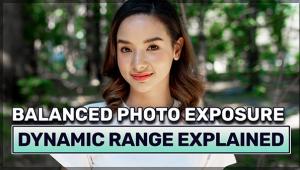Nikon’s D200; A 10.2-Megapixel Digital SLR Built For Comfort, And Speed Page 2
As more digital SLR users adopt a raw workflow there seems to be less need for assigning attributes to images within the camera. But they can serve as a foundation for other work, and do stick to NEF files when revealed in a Browser, although they are easily changed in the raw processing procedures later. Users of the D200 can have hours of fun playing with the setups that include the usual sharpening, contrast, color, saturation, and hue shifts. These can be played in combination, of course, giving more permutations than an amateur statistician can imagine. But there are now a number of presets, dubbed Image Optimization, which is Nikon's opinion of the combinations to be applied to various scenes and subjects. The names indicate the effect: Normal (defaults), Softer, Vivid, More Vivid, Portrait, and Black and White. Add to this six preset White Balance modes (with fine-tuning), a color temperature setting, and white balance bracketing and you can control the look of an image to the nth degree. Not to mention ISO options.
Candid In Poor Light |
|
 |
|
|
Do we really need all this? I'm sure that most folks, including those
who just want to shoot images, will feel this is a bit of overkill, but if nothing
else Nikon has assured its fans with this camera that they will never run out
of image attribute options. Simplest is to shoot raw and play later, but that's
too easy. Most shooters will find a few combinations to their liking and stick
with them. To help sort this out, there's a Recent Settings menu, from
which you can select from the last 14 settings selected.
The options extend to metering and focusing controls as well. I am a big fan
of center-weighted metering and exposure lock as a way to expose digital images,
and Nikon has of course included this as an option, along with their vaunted
3D Color Matrix and the sometimes useful Spot option. Plus there's the
usual exposure modes and flash controls, including all the sync options and
i-TTL flash exposure control. The Multi-CAM 1000 focus detector is swift and
accurate, made more so by the three focusing modes and 11 focusing targets,
with wide focus available in seven targets.
Multi-Image |
|
 |
|
|
In short, the D200 is everything you might want it to be and includes just
about every imaging option known to man. And, just for fun, Nikon has thrown
in a multi-exposure (on a single frame) and in camera imaging composite function
as well. Plus there are all sorts of wireless options, including i-TTL wireless
flash control built into the camera and wireless image transfer, with a coming
WT-3 Wireless Transmitter.
In The Field
I photographed with the D200 under various lighting conditions, with an emphasis
on low light and high ISO settings, more and more my preference when working
with a digital SLR. Having grown up in an era when high-speed films got increasingly
better, digital SLRs trump those advances and make high-speed shooting even
more fruitful. In addition, I worked with the supplied Nikon AF-S DX VR Zoom-Nikkor
18-200mm f/3.5-5.6G IF-ED lens, which, while not the fastest zoom on the market,
made low-light shooting even more attractive. Indeed, this is a camera made
for use with a VR lens, and I can see that the 18-200mm should be an essential
lens for any travel kit.
One very positive aspect of the D200 is the ease with which you can move through
operational changes in the field without delving too deeply, or at all, in the
LCD menu. Just about every control required is on the camera body, and while
the buttons are legion I quickly learned which did what and found that I could
easily shift metering pattern, exposure mode, resolution, exposure compensation,
ISO changes, etc.
File Potential |
||
 |
 |
|
|
||
As expected from a Nikon, and delivered in this camera, the 3D Color Matrix
meter was dead-on, even in challenging lighting situations. Focusing was as
fast as you could desire, especially in low light, and color balance in Auto
White Balance even surprised me in how accurate it could be, even under the
ugliest of ambient light, fluorescents. The LCD was extremely visible and handy
and menu items were quite readable even in bright daylight, as was image playback.
I used Single and Continuous shooting mode, and there was no shutter lag and
writing to card, even in bracketed bursts with flash, when using the supplied
Lexar WA 80x CompactFlash card.
I shot mostly in raw+Normal JPEG mode, and opened the raw using Adobe's
Photoshop CS2 Bridge with the Camera Raw Version 3.3 update. The 12-bit raw
files, either in CS2 or Nikon's Capture Version 4.4 software, showed me
why raw is the way to go with digital SLRs in general and this camera in particular.
Not that there's anything wrong with JPEGs; it's just that the raw
brings the full potential of this camera to the fore in sharpness, contrast,
and in the incredible range of color and tonality.
I'll let the pictures and captions tell the rest of the tale. Priced at
about $1700, the D200 will appeal to those who want one of the best and most
useable digital SLRs today, but want to experience pro build and handling without
paying the higher price tag of pro-level cameras. At 10+ megapixels it certainly
delivers the imaging power for enlargements and even radical crops on 8x10 prints.
With more built-in imaging options than one could ever use or imagine, there
isn't much the D200 can't handle.
For more information, contact Nikon Inc., 1300 Walt Whitman Rd., Melville, NY 11747; (800) 526-4566, (631) 547-4200; www.nikonusa.com.
- Log in or register to post comments

































